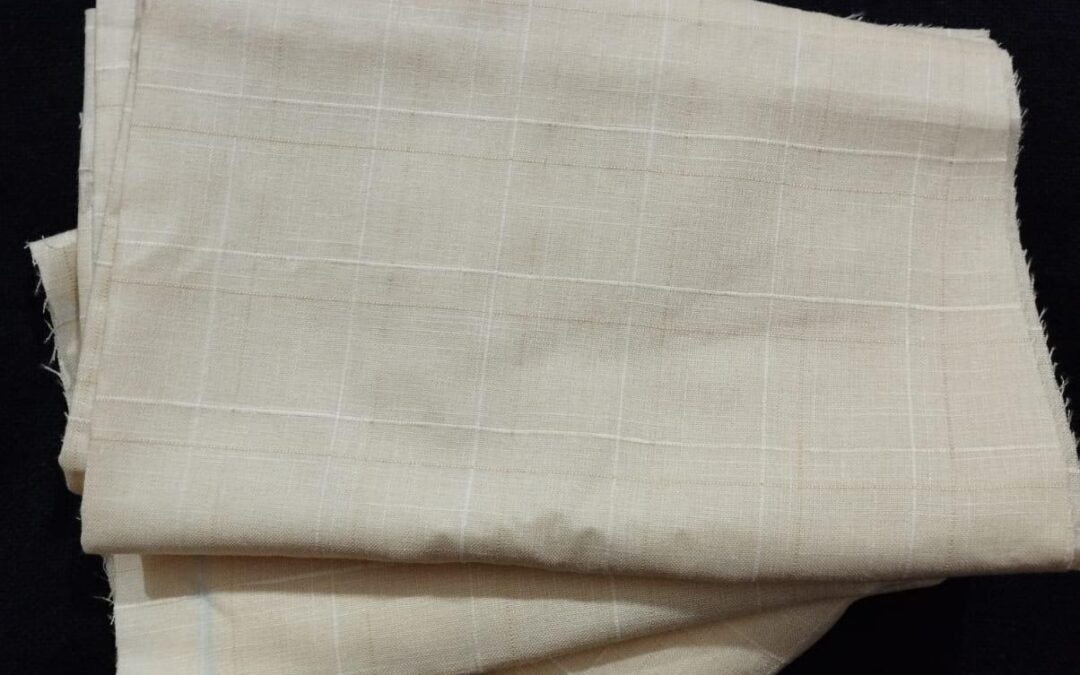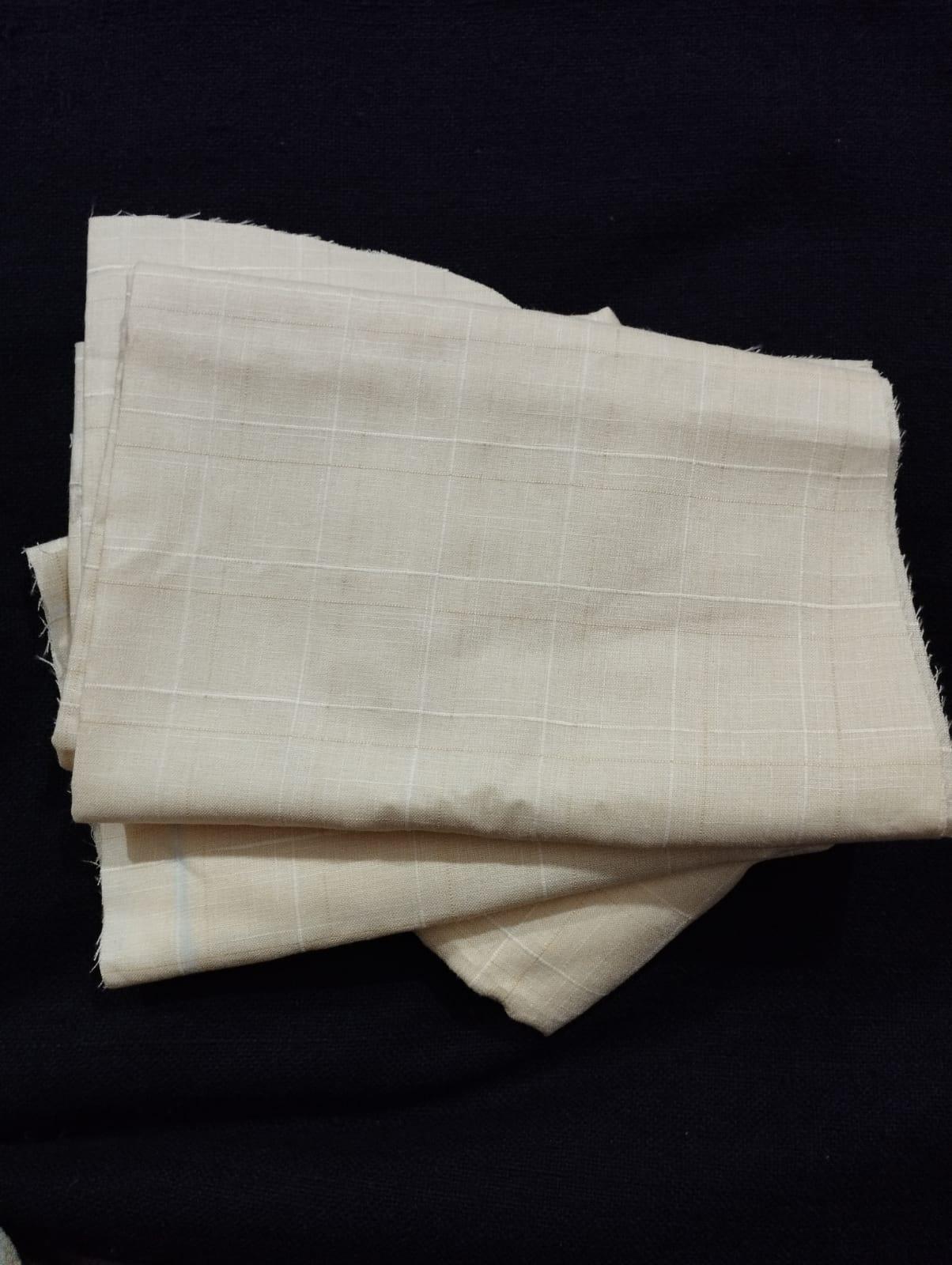
by Purba | Mar 21, 2024 | Academic |
Khadi is a versatile fabric which is hand spun and hand woven, capitally made with cotton but it can be also made with silk or wool. Since Khadi is not industrially manufactured just like other textiles, it is economical as it does not rely on electronic units and also environment friendly. The fabric is comfortable, lightly harsh and it gives cool feel in summer and warm in winter.
Khadi has a history in India, opposing British rule which was encouraged by Mahatma Gandhi during the Indian dependence movement. It was then used to boycott British goods and to empower the rural India . To bring it in the front, the government set up Khadi and Village Industries Commission to promote Khadi production in India . It was quite hard to acknowledge khadi to everyone as it was no longer to be traced. Later a dynamic change was recognized as khadi was economial than the others. The journey of khadi in Bangladesh was started in 1921 when Gandhi went to Chandina upazila ,located in Comilla. Hence many weaving centre were developed in Mainamati, Muradnagar etc. Khadi cottage ,Khadi house , Khadi Aarong etc. are some products of Comilla nowadays.
Khadi fabric can be of different types, such as: cotton khadi, silk khadi , lilen khadi, khadi silk cotton etc. Shirts, sarees, shawl, towel, bed sheet etc are made by Khadi fabric.

Khadi fabric. Photo courtesy: Author
Being a handspun material it has some problems such as lack of modern technologies, material crisis, lack of proper guidance or lack of proper marketing but having these obstacles it is still competing because of the development of culture, tradition, contribution to national economy and remembrance the rich history of it.
With the global change of marketing a new dimension has added to the Khadi products as it’s sustainable and a local product, designers are choosing it and making wonderful designs out of it. Earlier khadi was dyed in earthy tones but now muted tones are also used like brown, greens etc. in producing khadi fabric. It’s getting versatile day by day.
Recently The Fashion Design Counsil of Bangladesh (FDCB) had organized a khadi fest where an exhibition and fashion show was held on January 2024. The show represented a runway where the renowned Bangladeshi designers exerted their latest designs with the novelty of khadi.
Khadi is a sustainable, ecofriendly traditional garment which speaks the story of India’s freedom. Khadi has always been a part of our Bangali tradition also. It might be the future fabric renowned all over the world.
You can also read our articles on Muslin, silk, Nakshi Katha and Bengal motifs.
Reference :
- Textile Learner
- Textile Today
- Wikipedia
- Hindustan Times
Author:
Soumeen Tasnim
Department of Textile Fashion and Design (DoTFD)
Bangladesh University of Textiles (BUTEX)
![Denim – Polluting or Evolving?]()
by Purba | Apr 25, 2021 | Fashion and sustainability |
Whenever we are asking which cloth makes you feel comfortable while you are travelling? An answer always passes through your head and you look down to your pair of jeans. Yes, there lies the answer!
Jeans are made of denim fabric a famous fabric for its durability. But have you ever thought weather your jeans are ecofriendly or not? Or have you ever wondered if the fabric was made is a different way to make it strong? May be you have or may be you haven’t. If you have then hope this article will provide you with a best answer!
Why Denim is considered as strong fabric?
Denim were made for gold miners as their fabrics needed to be strong enough and could handle the hazardous work they do. And Levi and Strauss first invented the denim that could hold its shape even after working in the mines or other hazardous work and it didn’t need frequent washing. It started blooming since then, Then it made debut as a film dress and become popular in cowboy movies and western movies.
Special weaving process and rivets to keep it from ripping made it strong than other clothes.

Picture: Factory beside a river. Courtesy: Photo by Linda Finkin on Unsplash
Why is it considered as a non eco friendly fabric?
Talking about denim’s being not an eco-friendly fabric, we can sort the problems in a numerical order and denim has got problem in every step of its way to processing from cotton to
finished fabric. Here are the problems described and I have also described how they can be reduced to minimum.
Cotton Cultivation Process:
Cotton plants need a lot of water to start with and even one of the most pesticide using plants. So they are polluting water and actually consuming a lot of water. Producing just 1 kilogram (2.2 pounds) of cotton can require up to 7,660 gallons of water, depending on where it’s grown. So it’s a huge amount of water. Even workers who are working in the field are exposed to the chemicals that are used as pesticides.

Picture: Cotton. Courtesy: Photo by Amber Martin on Unsplash.
Dying process:
Dying process in the textile factory means dying the fabric with chemicals and colors as coloration process needs various chemicals to make the colors long-lasting. A series of chemicals are used to treat denim fabric and it’s colored with indigo color, a special color that lasts long enough to have the fabric
10/11 wash. 7.5 billion feet of denim fabric is produced every single year and they are repeatedly washed with water. A question may arise so what is the problem! We can use wasted water! But unfortunately we cannot do that as we have used the chemicals once and it has different ratio after one use. So the waters are wasted. It was noticed that Xintang, a town in southern China, the denim capital of word faced a disaster in 2013 . All of its rivers ran deep blue and smelled foul because the denim producers damped all the wasted water in the river.
Washing Process:
Washing denim is a process where a lot of chemical treatment is involved. While researching it was found that denim fabric contains heavy metal which can be disastrous for human life. After the pieces of denim is sewn together it is tossed into a variety of washing machine to gain the color or the faded color according to the trend and design.
So how to overcome this situation? Is there any solution to this problem? As human brain is the most sophisticated one, it has been searching for the solution for decades and a lot of solution has came forward. Let’s talk about that!
Hemp vs Cotton!
Hemp is often considered as a drug which is a miss conception. Levi the legendary brand of denim has found a technology to make hemp feel like cotton. They have blended 30% hemp and 70% cotton in their denim. Hemp produces fibers more than same amount of cotton and they need less amount of water to cultivate.
So it is a legendary step in the world of denim as denim is one of the most environment polluting industry in the world.

Courtesy: Photo by Rick Proctor on Unsplash.

Courtesy: Photo by Hanna Balan on Unsplash. Picture: Hemp vs Cotton.
Laundry system:
As we know the washing process need a lot of water so we need to reduce the amount of water. Some company has been trying to develop the environment. Pakistani denim company named Soorty has been trying to develoo a denim laundry system that is environment friendly and socially conscious. It has already invested to the most expensive wet denim processing plant in Pakistan. Later on they established A spinning space and in house recycling unit to recycle the wasted water.
This Industry needs to work altogether to reduces the effects and that’s why they made a joint effort in 2019 to go the greener way to reduce the pollution. The brands who have signed the commitment, they express their feeling as they are committed to creat a product or multiple products in adherence to the jeans redesign guideliness. Similarly, in fall 2020, Dutch and international brands signed the Denim Deal in Amsterdam, a pledge to reform and recycle jeans. The project, which is an initiative by House of Denim and the Dutch government, was started to create a circular economy and reuse more old denim garments.

Picture: Denim for future! Courtesy: Photo by Albany Capture on Unsplash.
It will continue as a debate topic that weather Denim is a fabric that we should put away or we should continue with it! But as long as I don’t have to wash my denim regularly and is made with latest ways, I am not leaving my most reliable “Friend Dress” Jeans!
Go green! Save the environment and wear jeans which are less hazardous to the environment!
By Team Bucolic Bohemian,
Mentor: Umme Memory Mim (Id: 2018-1-6-012) Dept: Textile Fashion & Design
Leader: Sabiha Moon Taha (Id: 2019-1-6-006) Dept: Textile Fashion & Design
Executive: Md. Mahmud Hosen (Id: 2020-1-2-006) Dept: Fabric Engineering
Reference:
If you want to read about a denim brand called Risen Jeans, you can go here! We’ve got you covered!


